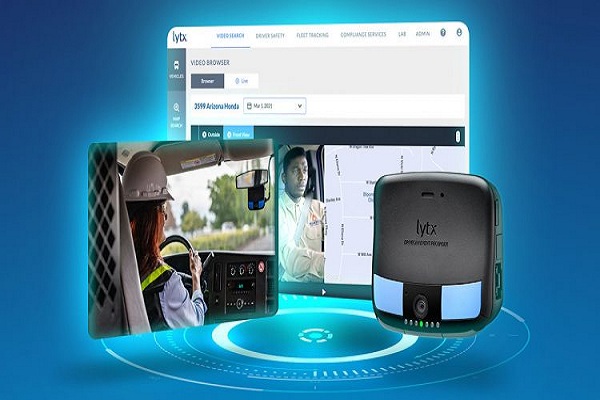What Is Workplace Experience and How to Elevate It
Hiring and retaining top talent has become more challenging than ever, especially with the advent of the Great Resignation triggered by factors like job dissatisfaction and stagnant wages. In this era of global workplaces, companies are now compelled to focus on a critical aspect often overlooked — workplace experience.
Understanding Workplace Experience
Workplace experience encapsulates how employees engage with their work environment, including the physical office, digital tools, and the workforce. It goes beyond the conventional employee experience, emphasizing additional elements such as flexibility, physical space, and digital resources.
Significance of Workplace Experience
In the era of hybrid work environments, where employees divide their time between office and remote work, a positive workplace experience is crucial. Brent Hyder, President and Chief People Officer at Salesforce, emphasizes that the employee experience extends beyond office perks, highlighting the need for an immersive and engaging workspace.
Positive vs. Negative Employee Experience
Employee experiences manifest in online reviews. Positive experiences result in favourable ratings, while negative ones lead to damaging feedback. To attract and retain the best talent, creating a workplace that ensures employee satisfaction is imperative, preventing negative reviews that could deter prospective candidates.
Factors
The components of workplace experience — physical workplace, digital workplace, and the workforce — are interlinked. For example, the growing demand for flexibility impacts the physical workspace, digital tools, and the workforce structure. Efficient collaboration between departments like HR, IT, and facility teams is vital to ensure a cohesive experience.
Benefits
- Enhanced Hiring Opportunities: A positive workplace experience is a magnet for top talent, influencing hiring recommendations and referrals.
- Increased Employee Engagement and Retention: A comfortable, supportive workplace reduces turnover and absenteeism, directly impacting client experiences.
- Efficient Space Usage and Lower Costs: Human-centered design and efficient space utilization lead to cost savings through reduced real estate expenses.
Best Practices for Improving Experience
Listen to Your Employees
Gathering feedback is a fundamental step in enhancing the workplace experience. Through surveys or one-on-one interviews, companies can gain valuable insights into employee sentiments. These inquiries should delve into various aspects such as workspace satisfaction, flexibility, accessibility to tools, collaboration dynamics, and overall positive experiences. By actively listening to employees, organizations can pinpoint specific areas for improvement and tailor their strategies to meet employee expectations effectively.
Designate Responsibility for Workplace Experience
Assigning dedicated roles for managing workplace experience is crucial for its success. Managers or Chief Employee Experience Officers play a pivotal role in overseeing, enhancing, and reporting on the overall workplace experience. Their responsibilities extend from the recruitment phase, ensuring that the employee journey is seamlessly integrated into the company’s culture and values. This strategic approach helps in creating a cohesive and positive work environment that aligns with the organization’s objectives.
Invest in a Workplace Experience Platform
Technology acts as a catalyst in unifying the physical, digital, and workforce components of workplace experience. Investing in a Workplace Platform becomes imperative for organizations aiming to provide seamless experiences. These platforms streamline various processes, from desk booking to communication and issue resolution. The integration of such technology not only enhances operational efficiency but also contributes to a more engaging and user-friendly work environment.
Foster Cross-Team Collaboration
Collaboration is the linchpin for a comprehensive workplace experience strategy. Involving teams from HR, IT, security, and facility management ensures that all aspects of the workplace are considered. This collaborative effort is vital in making digital tools easily accessible, maintaining a strong company culture, and optimizing physical spaces. By breaking down silos and fostering synergy between different departments, organizations can create a holistic and integrated approach to workplace experience.
Measure and Adjust Accordingly
Establishing baseline metrics is the foundation for effective workplace management. Metrics such as the Employee Net Promoter Score (eNPS) and Advanced Workspace Analytics provide quantitative insights into employee satisfaction and workspace utilization. Continuous evaluation based on these metrics allows organizations to identify trends, make necessary adjustments, and implement improvements. This iterative process ensures that the workplace experience remains dynamic and responsive to the evolving needs and expectations of the workforce.
Conclusion
In the dynamic landscape of modern work, workplace experience emerges as a linchpin for attracting, engaging, and retaining top talent. By prioritizing employee satisfaction through thoughtful design, digital integration, and strategic collaboration, businesses can not only weather the challenges of the Great Resignation but also thrive in the evolving work environment.
Crafting an exceptional it involves a holistic approach that considers the physical, digital and human elements of the workplace. Ensuring a harmonious blend that contributes to the overall success of the organization.
FAQs:
Q1: What is the Employee Net Promoter Score (eNPS)?
A: The eNPS is a metric measuring how likely employees are to recommend the company as a good workplace place, providing insights into overall workplace satisfaction.
Q2: How does it impact client experiences?
A: A positive workplace experience translates to higher employee engagement, directly influencing client interactions and experiences.
Q3: Why is flexibility a crucial component of it?
A: Flexibility aligns with the changing dynamics of work, offering employees the freedom to choose where and how they work, contributing to overall satisfaction.
Q4: How can technology enhance the workplace?
A: Such platforms streamline processes like desk booking and communication. Also, issue resolution fosters a seamless and efficient work environment.
Q5: Why is cross-team collaboration essential?
A: Collaboration between HR, IT, security and facility teams ensures a comprehensive strategy. Addressing digital accessibility, company culture and optimal physical spaces.





Pingback: 3 Finance Career Opportunities with a B.S. in Business Administration - Future Business Boost
Pingback: Navigating Change: The Impact of Remote Work on Human Resources - Future Business Boost